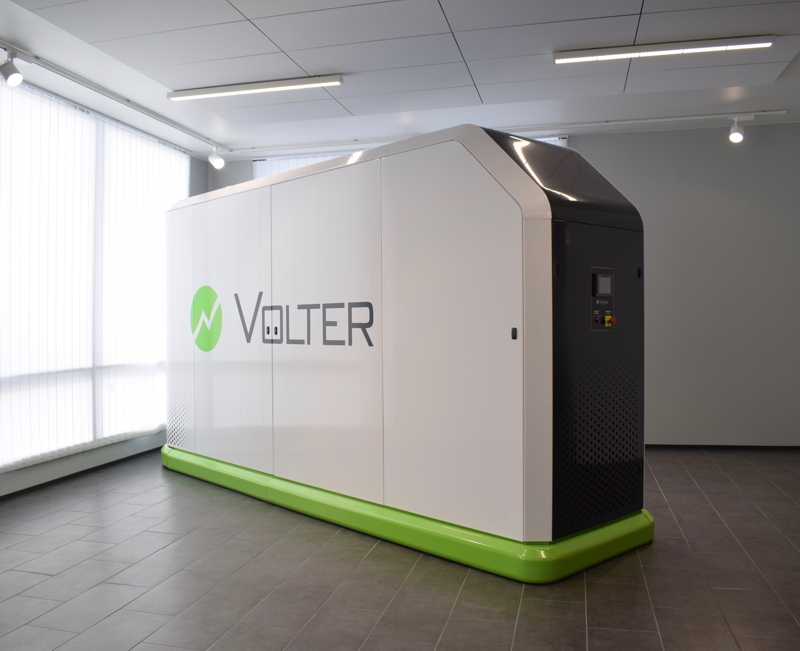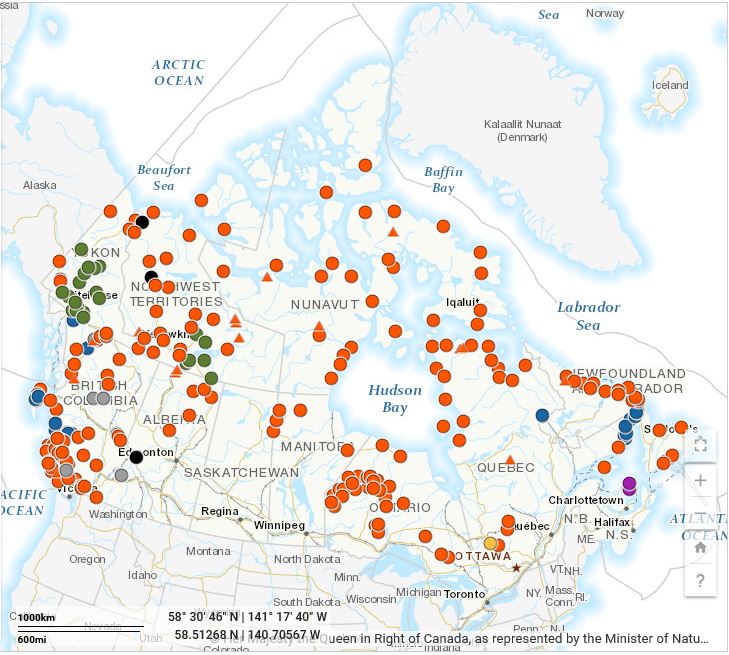- Reaction score
- 12,012
- Points
- 1,160
So, like the majority of the staff in our reserve CBG HQs?

Wwweeeelll! Reaally?

So, like the majority of the staff in our reserve CBG HQs?

Wwweeeelll! Reaally?

Space serving the Arctic and the Great Canadian North
The Canadian North and the Arctic are a vast region of ice and snow, and the home of people with rich and diverse cultures.www.asc-csa.gc.ca
Canada does have multiple satellites over the Arctic currently. They can be used to monitor ship traffic, among other things.
The government/DND does have the tools in place currently to observe above surface contacts. Those tools just aren’t visible or high profile.
MPA & RPA over the North sounds great. And it would be, absolutely. But is it duplicating a capability we already have, re identifying surface contacts?
True. We don’t have the ability to promptly respond to violations the way we could with a MPA. But our MPA can’t engage surface contacts anyway.
Between satellites above the Arctic and the AOPS roaming about, as well as the facility being built, we aren’t blind by any means. I think we forget just how big of an area the Arctic actually is.
Our problems are knowing what is happening sub-surface, and an ability to influence what’s happening sub-surface. And to be frank, I don’t see any Canadian government being able to change that anytime soon - even if we did UOR everything we would want.
Personally, I say let our key allies be allies.
We deployed MPA to the UK when they were experiencing a gap in having that capability - I don’t think anybody in the UK thought Canada was invading, or stealing their sovereignty. We were being a good ally.
We deployed CF-18 fighters to Alaska to take over USAF NORAD duties when their F-15C fleet was grounded due to 2 mid-air breakups back to back. I don’t think the US thought we were trying to steal Alaska, we were being a good ally.
If nuclear submarines are the main tool to operate under arctic ice, and keep Russian and Chinese nuclear submarines away - then let them fill the capability gap we have.
0.02
I had the opportunity to go for a (very slow, very short) run with one of the CBG HQs a couple of times.
It was kind of like watching a refugee column, except that most refugees manage to retain some shred of their dignity
Sound like candidates for the Vital Points Invalid Task Force.
. . . It might gain it some political brownie points with the First Nations. . . .
| Province/ Territory | Population estimate | Total seats |
|---|---|---|
| Yukon | 34.666 | 1 |
| Northwest Territories | 43,675 | 1 |
| Nunavut | 33,322 | 1 |
Not a lot of calories in Northern brownies.
Province/ Territory Population estimate Total seats Yukon 34.666 1 Northwest Territories 43,675 1 Nunavut 33,322 1
Canada’s 292 remote communities rely heavily on diesel fuel for heating, electricity generation, and transportation. The high cost of diesel energy is a major expense for these communities, and the “true cost” can be even higher.

The elctricity for most remote northern communities is provided by diesel generators, and for 6 months of the year there is no sun, so....
Personally, I say let our key allies be allies.
We deployed MPA to the UK when they were experiencing a gap in having that capability - I don’t think anybody in the UK thought Canada was invading, or stealing their sovereignty. We were being a good ally.
We deployed CF-18 fighters to Alaska to take over USAF NORAD duties when their F-15C fleet was grounded due to 2 mid-air breakups back to back. I don’t think the US thought we were trying to steal Alaska, we were being a good ally.
If nuclear submarines are the main tool to operate under arctic ice, and keep Russian and Chinese nuclear submarines away - then let them fill the capability gap we have.
0.02
SMRs (small modular reactors). Canada knows how to do nuclear power. It would be a shame to not kill two birds with one stone: enduring, relatively easily-deployable power in the North; and supporting Paris 2050.
Upfront Capital Costs (NR Can):
First-of-a-kind units suitable for mining are estimated to cost in the order of $200-350M for a 20 MWe SMR, with lower costs thereafter as the supply chain develops. May 21, 2021
Propane Powered Micro-CHP
When it comes to efficiency, there’s no doubt that micro combined heat and power (micro CHP) beats electricity supplied over the grid.
The electricity that comes to a typical single-family home in the U.S. is only about 33 percent efficient, according to the U.S. Environmental Protection Agency (EPA). That’s because the heat used to generate it in a coal- or gas-fired power plant is lost, as is some of the electricity itself during transmission over high-voltage power lines.
(I believe that to be likely in an SMR as well, unless the houses were close enough together to benefit from a central hot water distribution system)
Compare that to micro CHP, which uses an on-site gas- or propane-fired engine to generate electricity while capturing the engine’s heat to produce hot water. These systems are typically 60 to 80 percent efficient, with some systems nearing 90 percent efficiency, according to the EPA.
Micro CHP is best suited for large, luxury homes with a high thermal load. (Or a small northern one with cold dark days and long cold nights)
Micro CHP is already an established technology in Japan and Europe, but it has a much smaller share of the U.S. single-family market. That is primarily due to the systems’ cost. They currently run around $14,000 per kW installed, or $21,000 for a small, 1.5kW residential system, according to Fairfax, Virginia–based consultancy ICF. That per kW cost tends to go down as system size goes up; manufacturer Yanmar says its 5kW system typically costs between $40,000 and $60,000 installed, or $8,000 to $12,000 per kW.
(1.5 kW for a residential unit. Consider a small village or 1000 people. 250 homes? 375 kW. Or 0.375 MWe. Even if each home were supplied with a 5kW Yanmar system at 60,000 USD - and sold their power back into the community grid - that would only cost 15,000,000 USD - 20,000,000 CAD - to install and create a 1.25 MWe energy "hotspot" in the North.)
...
Home size and thermal load

Micro CHP systems offer the best payback in areas where electricity costs are high. Shown is Yanmar’s CP5WN model.
The most likely residential candidates for micro CHP are large luxury homes of at least 3,000 square feet with a high thermal load, according to ICF. Amenities that contribute to the above-average thermal load include heated swimming pools, hot tubs, and spas, as well as heated driveways and walkways for snow removal.
“We want to utilize a minimum of around 60 percent of the available BTUs of heat that we produce,” says Michael Alfano, sales application engineer at Adairsville, Georgia–based Yanmar America. “To make it financially justifiable to install our 5kW system, somewhere between 5,000 and 7,500 square feet is usually our base on a residential application. Homes with radiant heat or hydronic heating work best.”
Local electricity costs
In the U.S., micro CHP has the best payback in areas that have high electricity costs.
The national average in September 2017 was 13.3 cents per kW hour, according to the EIA. Areas that typically exceed that average are the Northeast, California, Alaska, and Hawaii, as well as many large cities, according to Anne Hampson, principal in the distributed energy resources practice at ICF.
Keep in mind, too, that while a utility may report a lower-than-average per kW hour price, you’ll want to look at your client’s total electric bill to figure out what they’re actually paying.
“The utility might tell you that they’re selling a kilowatt at 6 cents [per hour], but when you take the entire bill and divide it by the kilowatts actually used, you find out that it’s closer to 21 or 22 cents,” Thuesen says. “Other service charges and taxes add up to a significant portion of the bill, which [the client is] not paying with CHP.”
Spark spread size
The spark spread, or the price difference between electricity and gas or propane in a given market, also comes into play. Using a lower-cost fuel source, CHP units can generate electricity at a cheaper rate than what the utility charges. “That’s a big key to the deployment of these systems,” Alfano says. “When you have a large spark spread, it becomes very viable to use a micro CHP system.”
Net metering options
States that allow net metering to spin a home’s electric meter backward when a micro CHP system generates excess power also help justify the cost. Yet while micro CHP combined with on-site battery storage is completely feasible for off-grid homes, that’s not where most systems are used.
“The majority of the systems we know about are still grid-connected,” Hampson says. “Those homeowners can run their systems to meter power back to the utility, and use that as another way to zero out their electric bill.
Power-loss potential
Other candidates for micro CHP are homes located in remote areas where extending utility service from the grid would be cost prohibitive, and those in areas where extreme weather events like hurricanes and blizzards could result in prolonged power outages. Propane’s advantage as an off-grid fuel is especially compelling as a power source for micro CHP at these types of homes. And unlike backup generators, which can fail after extended continuous use, micro CHP units are designed to run 24/7, if needed.
“One of the sweet spots for micro CHP is a large custom home in an area where the grid goes down, such as hurricane and tornado zones, or regions that experience big snowstorms and high winds,” says David Goswick, CEO of Houston-based HOUZE Advanced Building Science Inc., which has built four homes powered by micro CHP. “Think about [the impact of] Superstorm Sandy on Long Island, or Hurricane Harvey here in Houston.”


 www.saatotuli.ca
www.saatotuli.ca
I am not sure propane is a reliable source of heat/power for Arctic communities, where the temperature routine
falls to the point where is becomes a liquid and therefore, unburnable.
I think there is some room for a thoughtful rethink of how northern communities are powered and heated. I have seen the quantities of diesel fuel shipped north each year and it is staggering. If we can put a dent in that amount (without further driving northern communities into energy poverty) it is worth it.
Article from the International Energy Association on the use of domestic biomass Combined Heat and Power generators.
I think there is some room for a thoughtful rethink of how northern communities are powered and heated. I have seen the quantities of diesel fuel shipped north each year and it is staggering. If we can put a dent in that amount (without further driving northern communities into energy poverty) it is worth it.
I think there is some room for a thoughtful rethink of how northern communities are powered and heated. I have seen the quantities of diesel fuel shipped north each year and it is staggering. If we can put a dent in that amount (without further driving northern communities into energy poverty) it is worth it.
Since we seem to have drifted into NRCAN territory, I thought I'd share this for interest:
Reducing diesel energy in rural and remote communities
Diesel generated energy
Remote communities not connected to the North American electricity grid rely on costly and greenhouse gas (GHG) emitting diesel generated electricity.
Energy efficiency and conservation measures can help to reduce overall demand for diesel and provide savings to communities. Local renewable energy such as wind, solar, hydro or biomass can replace diesel, reduce environmental and health impacts, and create local economic development opportunities.
”Remote communities . . . do not receive the benefits that 99 percent of the Canadian population take for granted, such as guaranteed, reliable and affordable electricity,” said Christopher Duschenes, Director, Centre for the North, The Conference Board of Canada. “They rely solely on locally generated electricity, which typically comes from diesel-powered generators. This limits the potential growth of these communities, results in high electricity costs and can have adverse environmental impacts.”
Power Shift: Electricity for Canada’s Remote Communities,
The Conference Board of Canada
Clean Energy for Rural and Remote Communities Program
www.nrcan.gc.ca

I worked closely with the individuals in the band that pushed this through, one of those projects that were a real win-win for everyone. Not every small community can do this, but the project was so successful that Yukon Energy asked them to expand their grid into the Yukon and BC Hydro pays them to provide power to Atlin. The profits after costs and maintenance gets plowed back into the community and BC Hydro saves money because it's not sending large quantities of diesel to the generators every week by truck. It also builds a sense of responsibility into the band and the people working at the plant. The Atlin hydro project – embodying First Nation principles - NS Energy
Propane | Clean American Energy
Propane is an environmentally friendly energy solution that is also affordable, reliable, and versatile. It's what makes propane the energy for everyone.propane.com
Or, for those living in the Boreal Forest - Biomass.

Electricity from woodchips and pellets - Säätötuli Canada
Produce electricity and heat with woodchips or pellets with the Finnish Volter small-scale Combined Heat and Power (CHP) units.www.saatotuli.ca
Come to that, it is probably safer, and cheaper to ship wood pellets (aka renewable biomass) down river from the Dene to the Inuit than it is to produce and ship propane.
Official bits on SMRI think there is some room for a thoughtful rethink of how northern communities are powered and heated. I have seen the quantities of diesel fuel shipped north each year and it is staggering. If we can put a dent in that amount (without further driving northern communities into energy poverty) it is worth it.

